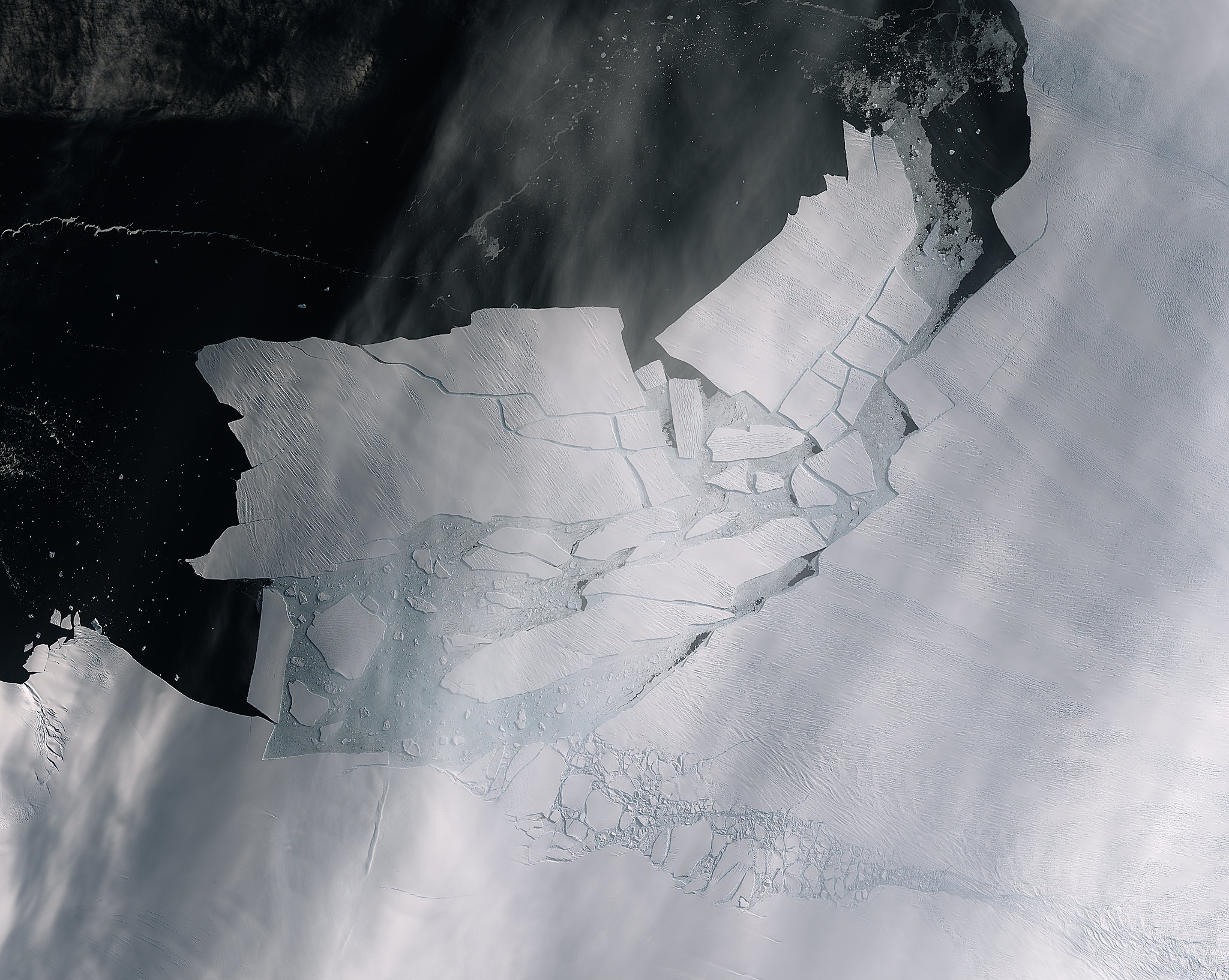Excerpt:
A steep decline of Antarctic sea ice may mark a long-term transformation in the Southern Ocean, and seawater intrusions beneath the Thwaites Glacier could explain its melting outpacing projections.
Antarctica’s vast ice fields and the floating sea ice surrounding the continent are Earth’s biggest heat shields, bouncing solar radiation away from the planet, but two studies released today show how global warming is encroaching even on the sunlight reflector in the coldest region on the planet.
Research by scientists with the British Antarctic Survey focused on last year’s dizzying sea ice decline. During the austral winter of 2023, Antarctic sea ice extent was about 770,000 square miles below average, an area bigger than Alaska.
Lead author Rachel Diamond said the modeling study showed that such an extreme decline would be a one-in-2,000-years event without climate change, “which tells us that the event was very extreme,” she said. “Anything less than one-in-100 is considered exceptionally unlikely.”
In a separate paper, another team of scientists documented how strong tides push seawater surprisingly far beneath the tongue of the Thwaites Glacier in West Antarctica, reinforcing concerns about the glacier’s melt speeding up and adding to sea level rise.
“Pressurized seawater intrusions will induce vigorous melt of grounded ice over kilometers, making the glacier more vulnerable to ocean warming, and increasing the projections of ice mass loss,” the authors wrote in the paper, published in the Proceedings of the National Academy of Sciences.
“The worry is that we are underestimating the speed that the glacier is changing, which would be devastating for coastal communities around the world,” said coauthor Christine Dow, professor in the Faculty of Environment at the University of Waterloo in Ontario, Canada.
In that study, scientists traced the course of the seawater by analyzing data from sensitive radar instruments that can detect when the surface of the ice raises just a couple of inches. The newly recorded kilometer-wide intrusion beneath the ice may be the reason that observed ice loss in recent decades has consistently been greater than that projected by ice sheet models, said lead author Eric Rignot, a glaciologist and climate ice researcher at the University of California, Irvine.
“The important thing about Antarctic sea ice is that since 2016, it has changed state,” he said…
Additional Media:
Was This Really a 1 in 700,000,000,000 Year Event?! – Antarctic sea ice melting fast
PBS Terra (02-27-2024):
For decades, Antarctic sea ice trends seemed to defy climate change, until…they didn’t. In just two years, Antarctica lost as much sea ice as the Arctic lost in three decades. Statistics say that the record low sea ice in 2023 was a 1 in 700 BILLION year event, suggesting that the models in this case may be broken, or that this anomaly was caused by climate change. And a new study asked the question: does this represent a STATE CHANGE? And what would that mean for one of our most iconic species, the emperor penguin? And what does reduced sea ice mean for Thwaites, the Doomsday Glacier? With summer sea ice hitting the third-lowest extent in recorded history, it’s time to check-in. Watch this episode to find out…









